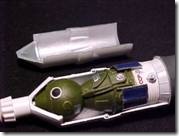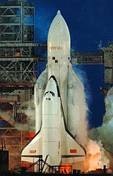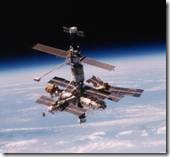The Soviet Space Programme: Sputnik to Mir – A Century of Russian Pride
Written by Vadim on February 10, 2009 – 3:25 pm - Some of the most popular Russian toys from the second half of the twentieth century were toys related to the Soviet space program. It’s no wonder that this unlikely topic captured the imagination of several generations of Russian tots. From the launch of Sputnik I in 1957, the space program was a proud symbol of the skill and supremacy of the Soviet Union.
Some of the most popular Russian toys from the second half of the twentieth century were toys related to the Soviet space program. It’s no wonder that this unlikely topic captured the imagination of several generations of Russian tots. From the launch of Sputnik I in 1957, the space program was a proud symbol of the skill and supremacy of the Soviet Union.
Sputnik opened not just an interest in space and astronomy, but a love of education and the sciences. Although the Soviet Union began as a movement of the working class, it found its renaissance in technology. The passion ignited by Sputnik was strong enough to sustain the country over a decades-long arms race. This enthusiasm was fed by the Cold War against the United States of America, which was romanticized as a competition between the opposing ideologies of communism and capitalism.
 For a while, it appeared that communism was winning the battle of the brains. The Soviet Union was not just the first nation to launch a satellite into space, but the first nation to put a man, then a woman, into space through the groundbreaking Vostok program.
For a while, it appeared that communism was winning the battle of the brains. The Soviet Union was not just the first nation to launch a satellite into space, but the first nation to put a man, then a woman, into space through the groundbreaking Vostok program.
Among the most popular Soviet space toys were toy rockets, made to resemble famous Soviet rockets such as the highly successful Proton rockets, which have been in continual use for several decades, and the R-7 rockets.
 Another giant leap for mankind made by the Soviet Union was the Soyuz program, a manned space program which has put more humans into space than any other in history. In a nation fraught with economic and political troubles, these triumphs caught the imagination and spirit of millions of Russians. A generation of children grew up playing with scale Soyuz space capsules and envisioning themselves as the next pioneer to see the Earth from the outside in.
Another giant leap for mankind made by the Soviet Union was the Soyuz program, a manned space program which has put more humans into space than any other in history. In a nation fraught with economic and political troubles, these triumphs caught the imagination and spirit of millions of Russians. A generation of children grew up playing with scale Soyuz space capsules and envisioning themselves as the next pioneer to see the Earth from the outside in.
 Like the American space shuttle it imitates, the Soviet Buran space shuttle was a recognizable symbol of the country’s advances into the unknown frontier of space. As the Cold War came to a close and Soviet-American relationships thawed, the space program continued to raise national pride and stimulate interest in the sciences.
Like the American space shuttle it imitates, the Soviet Buran space shuttle was a recognizable symbol of the country’s advances into the unknown frontier of space. As the Cold War came to a close and Soviet-American relationships thawed, the space program continued to raise national pride and stimulate interest in the sciences.
 The third generation of Soviet space craft culminated in the space station Mir, which was visited by astronauts from many different nations. Mir stayed in orbit for just days short of a decade, and outlasted the transition from a Soviet space program to a purely Russian one.
The third generation of Soviet space craft culminated in the space station Mir, which was visited by astronauts from many different nations. Mir stayed in orbit for just days short of a decade, and outlasted the transition from a Soviet space program to a purely Russian one.
 The Soviet space program has been an enduring point of Russian pride, and nowhere is this as evident as in Russian toys from this era. Models can be found of almost every declassified Soviet spacecraft. The toys range from the fanciful to perfectly scaled replicas. Although the Russian space program continues, it will never have the place in society it held during the Cold War. For just a few decades in time, travel in space was a symbol of hope and triumph in a nation that yearned for both. The era may be past, but its spirit lives on in the many toys and models that enthralled millions of Russian children.
The Soviet space program has been an enduring point of Russian pride, and nowhere is this as evident as in Russian toys from this era. Models can be found of almost every declassified Soviet spacecraft. The toys range from the fanciful to perfectly scaled replicas. Although the Russian space program continues, it will never have the place in society it held during the Cold War. For just a few decades in time, travel in space was a symbol of hope and triumph in a nation that yearned for both. The era may be past, but its spirit lives on in the many toys and models that enthralled millions of Russian children.
References:
http://en.wikipedia.org/wiki/Soviet_space_program
http://en.wikipedia.org/wiki/Sputnik
http://en.wikipedia.org/wiki/Vostok
http://en.wikipedia.org/wiki/Proton_(rocket)
http://en.wikipedia.org/wiki/Soyuz_spacecraft
http://en.wikipedia.org/wiki/Buran_(spacecraft)
http://en.wikipedia.org/wiki/Mir
Tags: rocket, soyuz, space capsule, space toys, sputnik
Posted in General | No Comments »




You must be logged in to post a comment.